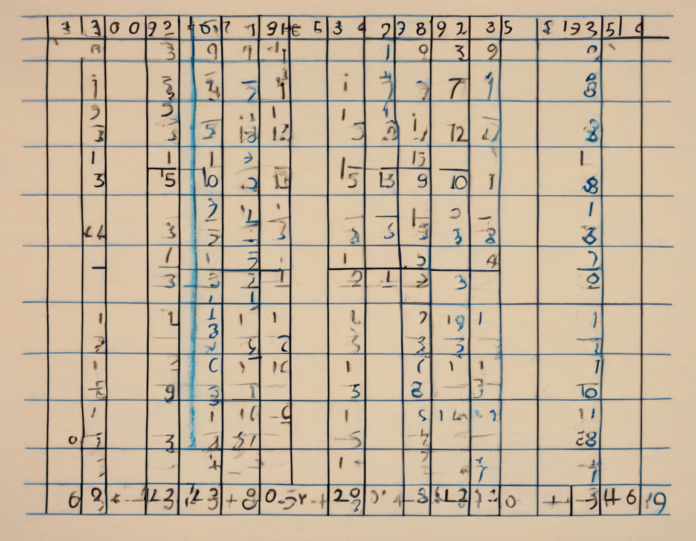Fractions are an essential concept in mathematics that is used in various real-world situations. They are crucial for understanding proportions, ratios, and other mathematical operations. One common operation involving fractions is subtraction. When we subtract fractions, we are essentially taking away a portion of the original value. In this article, we will explore what happens when we subtract 1 from fractions and how it affects the fraction.
Understanding Fractions
Before we delve into subtraction, let’s revisit the basics of fractions. A fraction consists of two parts: the numerator (the top number) and the denominator (the bottom number). The numerator represents the part of the whole, while the denominator represents the total number of equal parts into which the whole is divided.
For example, in the fraction 3/4, the numerator is 3, indicating we have 3 parts of the 4 equal parts that make up the whole. Fractions can also represent numbers between integers, allowing us to work with values that are not whole numbers.
Subtraction of 1 from Fractions
When we subtract 1 from a fraction, we are essentially subtracting one whole unit from the fraction. This operation affects the value of the fraction and can result in different outcomes depending on the original fraction.
Let’s consider a simple fraction, 3/4, and see what happens when we subtract 1 from it:
3/4 – 1
To subtract 1 from 3/4, we need to express 1 as a fraction with the same denominator as 3/4:
1 = 4/4
Now, when we subtract 4/4 from 3/4, we get:
3/4 – 4/4 = (3 – 4) / 4 = -1/4
Therefore, 3/4 – 1 = -1/4. The result is a negative fraction, indicating that the subtraction of 1 has taken us below zero in this case.
Subtraction of 1 from Different Types of Fractions
Let’s explore the outcomes of subtracting 1 from various types of fractions to understand how the operation affects different fractions.
1. Subtracting from Proper Fractions
Proper fractions are fractions where the numerator is less than the denominator. For example, 2/3 and 5/8 are proper fractions. When we subtract 1 from a proper fraction, the result will always be a negative fraction with a value between -1 and 0.
2. Subtracting from Improper Fractions
Improper fractions have a numerator that is equal to or greater than the denominator. Examples include 7/5 and 10/3. When we subtract 1 from an improper fraction, the result will be a new improper fraction or a mixed number, depending on the original value.
3. Subtracting from Mixed Numbers
Mixed numbers consist of a whole number and a fraction, such as 2 1/4 and 3 2/5. When we subtract 1 from a mixed number, we subtract 1 from the whole number portion. The fraction part remains unchanged.
4. Subtracting from Unit Fractions
Unit fractions have a numerator of 1. Examples include 1/2, 1/3, and 1/8. When we subtract 1 from a unit fraction, the result is 0, as the whole unit has been removed.
Applications of Subtracting 1 from Fractions
Understanding the concept of subtracting 1 from fractions is essential in various mathematical contexts. Some common applications include:
- Measurement: When measuring quantities less than a whole unit, subtraction of fractions is used to determine the remaining amount.
- Accounting: Fractional subtraction is crucial in financial calculations where precise amounts need to be deducted.
- Scaling: Adjusting proportions in recipes or calculations often involves subtracting fractions to modify the final outcome.
- Problem-solving: Many real-world problems require subtracting fractions to find the correct solution.
Tips for Subtracting 1 from Fractions
When subtracting 1 from fractions, keep the following tips in mind to ensure accurate calculations:
- Express 1 as a Fraction: Always represent 1 as a fraction with the same denominator as the original fraction for subtraction.
- Simplify the Result: Reduce the fraction to its simplest form after subtraction to get the most concise representation.
- Understand the Fraction Type: Different types of fractions (proper, improper, mixed numbers, unit fractions) will yield different results when subtracting 1.
Frequently Asked Questions (FAQs)
Q1: Can you subtract 1 from any fraction?
Yes, you can subtract 1 from any fraction by representing 1 as a fraction with the same denominator as the original fraction.
Q2: What happens if I subtract 1 from a fraction with a numerator of 1?
Subtracting 1 from a fraction with a numerator of 1 will result in 0, as the whole unit has been taken away.
Q3: Is the process of subtracting 1 from a fraction the same for mixed numbers?
When subtracting 1 from a mixed number, you only subtract 1 from the whole number part. The fraction part remains unchanged.
Q4: Can the result of subtracting 1 from a fraction be a mixed number?
Yes, for improper fractions, the result of subtracting 1 may be a mixed number, combining a whole number and a proper fraction.
Q5: Why does subtracting 1 from a fraction sometimes result in a negative fraction?
Subtracting 1 from a fraction can result in a negative fraction when the subtraction takes the value below zero.
In conclusion, the subtraction of 1 from fractions is a fundamental operation that can provide valuable insights into mathematical concepts and real-world applications. By understanding how this operation affects different types of fractions, one can master the art of manipulating fractions effectively. Practice with various examples to strengthen your skills in subtracting 1 from fractions and enhance your overall mathematical proficiency.


Recent comments